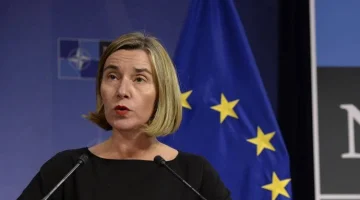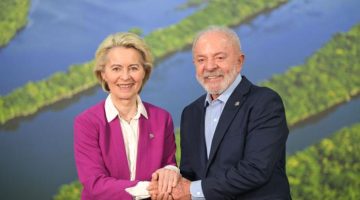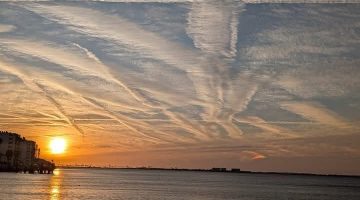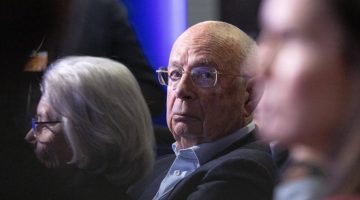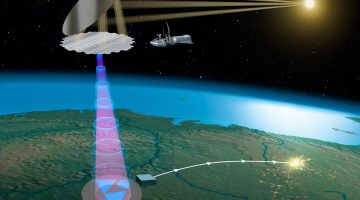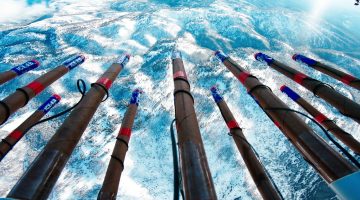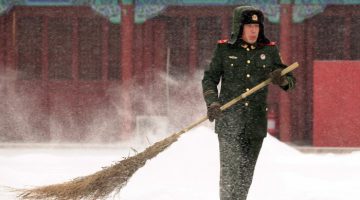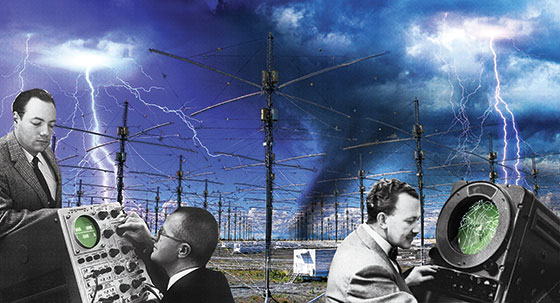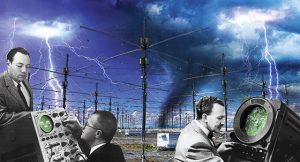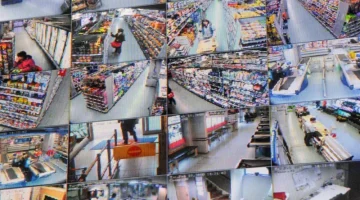By Nogeoingegneria
The 17th Joint Conference on Planned and Inadvertent Weather Modification (April 20–25, 2008, Westminster, Colorado), organized by the American Meteorological Society (AMS) and the Weather Modification Association (WMA), represents a unique and fundamentally important event in the history of weather modification. It highlights the international and multidisciplinary nature of the research and applications in this field.
Held as part of the 88th AMS Annual Meeting, the conference brought together scientists, researchers, and operators from the United States, Australia, Iran, Saudi Arabia, and other countries to discuss cloud seeding techniques, geoengineering, and related ethical and legal implications.
A distinctive aspect of this edition was the balance between operational research and speculative approaches. On one hand, concrete cloud seeding programs with evidence of increased precipitation in arid regions (Utah, Texas, Iran) were presented; on the other, innovative ideas like ionospheric heating for mitigating extreme weather events (paper by Lyle M. Jenkins and Bernard J. Eastlund, Atmospheric Heating as a Research Tool) were discussed.
It is important to note that this conference stands out as a “white fly” in the landscape of scientific events related to weather modification. Its multidisciplinary and international complexity, combined with a structured program ranging from cloud seeding operations to speculative geoengineering approaches, makes it a unique event of its kind.
The total absence of coverage by mainstream media is also surprising, signaling a gap between the scientific and operational importance of the sector and its public perception. Despite being accompanied by specialized press briefings, the conference did not find a place in journalistic reports, underscoring the technical and sometimes controversial nature of the subject.
This peculiarity further reinforces the historical and scientific value of the conference, which serves as a crucial reference point for anyone studying or working in the field of weather modification. It is an emblematic example of how international cooperation and scientific innovation intertwine in a sector that is vital for the sustainable management of global water resources and climate.
If you want to stay up to date with the latest news, subscribe to the TELEGRAM CHANNEL https://t.me/NogeoingegneriaNews.
The 17th Joint Conference on Planned and Inadvertent Weather Modification,
held from January 20 to 24, 2008, in New Orleans, Louisiana, as part of the 88th Annual Meeting of the American Meteorological Society (AMS), produced a significant amount of scientific material, with numerous abstracts and presentations on topics such as cloud seeding, mitigation of extreme events, and the environmental effects of human activities. The program on AMS Confex offers an excellent overview of the contributions.
Host: Planned and Inadvertent Weather Modification/Weather Modification Association
Session 1
New Mitigation Strategies to Combat Global Warming
Location: Standley I (Westin Westminster)
Chair: Thomas P. DeFelice, Hydrospheric Serivces
Weather and Climate Engineering
William R. Cotton, Colorado State University, Fort Collins, CO
Presentation PDF (187.7 kB)
Geo-Engineering: tuning Earth’s thermostats to cooler temperatures
Daniel Rosenfeld, The Hebrew Univ. of Jerusalem, Jerusalem, Israel
Session 2
New Unconventional Concepts and Legal Ramifications
Atmospheric heating as a research tool
Lyle M. Jenkins, Jenkins Enterprises, Houston, TX; and B. J. Eastlund
Presentation PDF (1.2 MB)
Philip W. Kithil, Atmocean, Inc., Santa Fe, NM; and I. Ginis
William R. Cotton, Colorado State Univ., Fort Collins, CO; and S. M. Saleeby
Presentation PDF (193.0 kB)
A machine to get rid of hurricanes
Presentation PDF (236.8 kB)
Session 3
Updates on Research and Operational Programs: Winter Precipitation Systems Part I
Arlen Huggins, DRI, Reno, NV; and S. L. Kenyon, L. Warren, A. Peace, S. Bilish, J. Denholm, and S. K. Chai
Presentation PDF (1.6 MB)
Ammonia and NOx in Seeded and Unseeded Snowfall – An Australian Perspective
James Hunt, ENVIRON Australia Pty Ltd, North Sydney, Australia; and J. Denholm and A. Huggins
Presentation PDF (247.6 kB)
Observations and science questions pertaining to cloud seeding over Tasmania
Anthony E. Morrison, Monash Univ., Melbourne, Vic, Australia; and S. T. Siems, M. J. Manton, and A. Nazarov
Session 4
Updates on Research and Operation Programs: Winter Precipitation Systems Part II
The role of weather modification in the Colorado River Basin States process
Thomas J. Ryan, Metropolitan Water District of Southern California, Los Angeles, CA
Presentation PDF (144.0 kB)
30+ Winter Seasons of Operational Cloud Seeding in Utah
Don A. Griffith, North American Weather Consultants, Sandy, UT; and M. E. Solak and D. Yorty
Presentation PDF (1.2 MB)
Results of Cloud Seeding Operations for Precipitation Enhancement in Iran during 1999-2007
Morteza Khalili Sr., National Cloud Seeding Research Center, Yazd, Iran; and M. Seidhassani, F. Golkar, and V. Khatibi
Precipitation Processes within Wintertime Clouds Over Central Saudi Arabia
Terry W. Krauss, Weather Modification Inc., Fargo, ND; and R. Bruintjes
Session 5
Updates on Research and Operational Programs: Winter Precipitation Systems Part III
A Data Display System for Weather Modification Research and Operations
Sher Schranz, NOAA/ERL/FSL and CIRA/Colorado State Univ., Fort Collins, CO
Presentation PDF (43.0 kB)
Operational aspects of the Wyoming Weather Modification Pilot Project: an update
Bruce A. Boe, Weather Modification, Inc., Fargo, ND
Presentation PDF (376.7 kB)
Design of the randomized seeding experiment of the WWMPP
Daniel Breed, NCAR/RAL, Boulder, CO; and M. Pocernich, R. Rasmussen, and R. Bruintjes
Session 6
Updates on Research and Operational Programs: Winter Precipitation Systems Part IV
Statistical Issues in designing a weather modification experiment: A case study
Matthew Pocernich, NCAR/RAL, Boulder, CO; and B. G. Brown
Use of an acoustic ice nucleus counter to map surface-based seeding plumes in Wyoming
Bruce A. Boe, Weather Modification, Inc., Fargo, ND
Presentation PDF (736.9 kB)
Bruce A. Boe, Weather Modification, Inc., Fargo, ND
Presentation PDF (323.4 kB)
Bart Geerts, Univ. of Wyoming, Laramie, WY
Session 7
Updates on Research and Operational Programs: Summer Precipitation Systems
Location: Standley I (Westin Westminster)
A review of the Texas weather modification programs in 2007
Todd R. Flanagan, South Texas Weather Modification Association, Pleasanton, TX; and S. D. Beall, R. E. Rhodes, J. Wright, and A. Ruiz-Columbié
Evaluation of the Effectiveness of Cloud Seeding in Texas from 2002 through 2006
William L. Woodley, Woodley Weather Consultants, Littleton, CO; and D. Rosenfeld
Presentation PDF (491.3 kB)
Session 8
Updates on Research and Operational Programs: Summer Precipitation Systems PART II
Legal consequences of weather modification
Marsha L. Baum, Univ. of New Mexico, Albuquerque, NM
Japanese Cloud Seeding Experiments for Precipitation Augmentation (JCSEPA)
Masataka Murakami, MRI, Tsukuba, Ibaraki, Japan
Polarimetric Radar Analysis of Hygroscopic Seeding
Paul A. Kucera, NCAR, Boulder, CO; and A. Theisen and D. Langerud
Presentation PDF (52.9 kB)
Panel Discussion 1
Location: Standley I (Westin Westminster)
Host: Planned and Inadvertent Weather Modification/Weather Modification Association
Panelists: William M. Gray, Colorado State Univ.; William R. Cotton, Colorado State Univ.; John Latham, NCAR; William L. Woodley, Woodley Weather Consultants
Facilitators: Wil Laska, Department of Homeland Security; Joe Golden, Univ. of Colorado/CIRES/NOAA/GSD
Wil Laska
William M. Gray
William R. Cotton
John Latham
William L. Woodley
Panel/Audience Interaction
Session 9
Updates on Research and Operational Programs: Summer Precipitation Systems Part III
Location: Standley I (Westin Westminster)
Host: Planned and Inadvertent Weather Modification/Weather Modification Association
Chair: William L. Woodley, Woodley Weather Consultants
Hygroscopic Cloud Seeding Operations In Andhra Pradesh, India during 2005-07
I.V. Murali Krishna, Jawaharlal Nehru Technological Univ., Hyderabad, AP, India
David Delene, Univ. of North Dakota, Grand Forks, ND
Precipitation Evaluation of Cloud Seeding Programs in Saudi Arabia and West Africa
Paul A. Kucera, NCAR, Boulder, CO; and R. Bruintjes and P. H. Herzegh
Sarah Tessendorf, NCAR, Boulder, CO; and R. Bruintjes, J. Wilson, R. Roberts, E. Brandes, P. May, J. Peter, I. Craig, R. Stone, S. Seims, M. Manton, and D. Axisa
Session 10
Application of Numerical Models to Planned and Inadvertent Weather Modification Topics
Location: Standley I (Westin Westminster)
Host: Planned and Inadvertent Weather Modification/Weather Modification Association
Potential Application of WRF/Chem to Weather Modification Problems
Steven E. Peckham, NOAA/ESRL/GSD and CIRES-Univ. of Colorado, Boulder, CO; and G. A. Grell, S. A. McKeen, J. D. Fast, and W. I. Gustafson Jr.
Interactive impacts of CCN, GCCN and IFN on snowfall over the Park Range
Stephen M. Saleeby, Colorado State Univ., Fort Collins, CO; and W. R. Cotton
Presentation PDF (926.9 kB)
Session 11
Application of Numerical Models to Planned and Inadvertent Weather Modification Topics Part II
B. Lebassi, Santa Clara Univ., Santa Clara, CA; and J. E. Gonzalez, R. Bornstein, and D. Fabris
A Cloud Microphysics Scheme to Resolve the Origins of the Caribbean Mid-Summer Drought
Daniel E. Comarazamy, Univ. of Puerto Rico, Mayaguez, Puerto Rico; and J. E. Gonzalez, N. D. Ramirez, and M. E. Angeles
Session 12
Aerosol Impacts on Clouds and Precipitation
Location: Standley I (Westin Westminster)
Host: Planned and Inadvertent Weather Modification/Weather Modification Association
Aerosol-cloud interactions over Istanbul, Turkey and central Saudi Arabia
Duncan Axisa, NCAR, Boulder, CO; and A. Teller, D. Breed, and D. R. Collins
Presentation PDF (287.3 kB)
Amit Teller, NCAR, Boulder, CO; and D. Axisa, D. Breed, and R. Bruintjes
Presentation PDF (1.6 MB)
An ‘aerosol effect’ detected but precipitation not affected
Edward E. Hindman, The City Univ. of New York, New York, NY
Presentation PDF (834.6 kB)
Don Griffith, Chairman, Awards Committee
Keynote Speaker: Starnes Walker, Department of Homeland Security
NCAR/NOAA Field Trip – Information to Follow
Session
Panel Discussion 2
Can Aerosols Be Used to Mitigate Potential Adverse Global-Warming Impacts on Precipitation?
Panelists: Roelof Bruintjes, NCAR; William L. Woodley, Woodley Weather Consultants; Daniel Rosenfeld, The Hebrew Univ. of Jerusalem; William R. Cotton, Colorado State Univ.; Roland List, Univ. of Toronto
Roelof Bruintjes
William L. Woodley
Daniel Rosenfeld
William R. Cotton
Roland List
Session 13
Aerosol Impacts on Clouds and Precipitation Part II
History and Future Directions in Monitoring Natural Ice Nuclei Populations
Anthropogenic aerosols invigorating hail storms
Daniel Rosenfeld, The Hebrew Univ. of Jerusalem, Jerusalem, Israel; and A. Khain
Kang Fengqin Sr., Institute of Arid Meteorology, Lanzhou, Gansu, China
Session 14
Aerosol Impacts on Clouds and Precipitation Part III
Location: Standley I (Westin Westminster)
Host: Planned and Inadvertent Weather Modification/Weather Modification Association
Chair: Andrew G. Detwiler, South Dakota School of Mines & Technology
Abdoulaye Sarr, National Meteorological Service of Senegal, Dakar-Fann, Senegal; and M. NDiaye and C. Diop
Roelof Bruintjes, NCAR, Boulder, CO
FONTE https://ams.confex.com/ams/17WModWMA/webprogram/17WMODWMA.html
If you want to stay up to date with the latest news, subscribe to the TELEGRAM CHANNEL https://t.me/NogeoingegneriaNews.
IMPORTANTE!: Il materiale presente in questo sito (ove non ci siano avvisi particolari) può essere copiato e redistribuito, purché venga citata la fonte. NoGeoingegneria non si assume alcuna responsabilità per gli articoli e il materiale ripubblicato.Questo blog non rappresenta una testata giornalistica in quanto viene aggiornato senza alcuna periodicità. Non può pertanto considerarsi un prodotto editoriale ai sensi della legge n. 62 del 7.03.2001.
